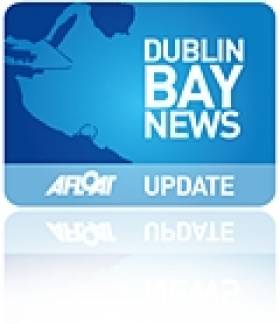Displaying items by tag: Flight Fest
L.E. Emer Takes Capital Centre-Stage Berth at Flight Fest Feast
#FlightFest – L.E. Emer's (P21) last large-scale public duty in Dublin Port took place at yesterday's Flight Fest flyover spectacular which according to organisers drew around 130,000 spectators, writes Jehan Ashmore.
The Naval Service's eldest fleet member was built by Verolme Cork Dockyard in 1978 and she berthed at North Wall Quay in front of the impressive backdrop of the National Convention Centre.
Tours were available onboard the sell-listed OPV on what would be the last such opportunity during her visit to the capital. Today she resumed her final patrol duties scheduled to end this Friday in Cork Harbour.
Adjoining the Convention Centre is the PWC building which was where a dedicated air-traffic control team placed in charge of the 30 plus aircraft of all shape and sizes that flew low over the length of Dublin Port and 'Docklands' quarter.
As previously reported among the participating aircraft were a pair of Air Corps CASA fishery patrol planes of the maritime squadron which flew in close formation with PC9 aircraft also drawn from the air-wing of the Irish Defence Forces.
As well as the World War II Catalina Flying-Boat with its distinctive design which could be easily identified from quite a distance as she loomed over the Liffey to the crowds delight.
Onlookers not only filled the city-centre quays but also thronged another Irish built vessel, T.S.M.V. Cill Airne which was chartered out for a private function.
The riveted hull veteran represents another rare example of an Irish built ship surviving on our shores. In this case the former Cobh-based transatlantic liner tender was built locally at the Liffey Dockyard more than a decade earlier than the L.E. Emer.
These days Cill Airne has a purely static role as she is moored as a floating river-restaurant, bar and lounge venue which was particularly well patronised during the Flight Fest that saw aviation and shipping converge.





























































